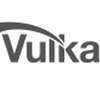The Khronos Group announces the release of the Vulkan 1.1 and SPIR-V 1.3 specifications. Version 1.1 expands Vulkan’s core functionality with developer-requested features, such as subgroup operations, while integrating a wide range of proven extensions from Vulkan 1.0.
Khronos will also release full Vulkan 1.1 conformance tests into open source and AMD, Arm, Imagination, Intel Corporation, NVIDIA and Qualcomm have implemented conformant Vulkan 1.1 drivers.
---
Vulkan 1.1 will drive increased industry momentum for this new-generation, cross-platform standard for explicit control over GPU acceleration. Vulkan now ships natively on almost all GPU-enabled platforms, including Windows 7, 8.X, 10, Android 7.0+ and Linux, plus Khronos recently announced open source tools to enable Vulkan 1.0 applications to be ported to macOS and iOS.
Beaverton, OR – March 7, 2018 – The Khronos™ Group, an open consortium of leading hardware and software companies creating advanced acceleration standards, announces the release of the Vulkan® 1.1 and SPIR-V™ 1.3 specifications. Version 1.1 expands Vulkan’s core functionality with developer-requested features, such as subgroup operations, while integrating a wide range of proven extensions from Vulkan 1.0. Khronos will also release full Vulkan 1.1 conformance tests into open source and AMD, Arm, Imagination, Intel Corporation, NVIDIA and Qualcomm have implemented conformant Vulkan 1.1 drivers. Find more information on the Vulkan 1.1 specification and associated tests and tools at Khronos’s Vulkan Resource Page.
“With enhanced developer tools, rigorous conformance testing and the public Vulkan Ecosystem Forum, Khronos is delivering on its goal to develop a complete and vibrant Vulkan ecosystem,” said Tom Olson, distinguished engineer at Arm, and Vulkan Working Group chair. “Vulkan 1.1 is a response to prioritized industry requests and shows our commitment to delivering a functional roadmap driven by developer needs.”
Vulkan 1.1 will drive increased industry momentum for this new-generation, cross-platform standard for explicit control over GPU acceleration. Vulkan now ships natively on almost all GPU-enabled platforms, including Windows 7, 8.X, 10, Android 7.0+ and Linux, plus Khronos recently announced open source tools to enable Vulkan 1.0 applications to be ported to macOS and iOS. Vulkan has widespread support in leading games engines including Unreal, Unity, Source 2 from Valve, id Tech, CroTeam’s Serious Engine, CryEngine, and Xenko. Vulkan is being used in over 30 cutting-edge games on diverse desktop and mobile platforms, including Doom, Quake, Roblox, The Talos Principle, Dota 2, and is the exclusive API used in AAA titles such as Wolfenstein II and Doom VFR.
New functionality in Vulkan 1.1 includes Subgroup Operations that enable highly-efficient sharing and manipulation of data between multiple tasks running in parallel on a GPU. Vulkan 1.1 also enables applications to perform rendering and display operations using resources that they cannot access or copy - for secure playback and display of protected multimedia content.
In addition, a wide range of Vulkan 1.0 extensions have been integrated, bringing significant proven functionality into core Vulkan 1.1, including: simultaneous rendering of multiple image views, use of multiple GPUs in a single system, and cross-process API interoperability for advanced rendering and compositing operations often used in demanding applications such as Virtual Reality. These core functionalities also include advanced compute with 16-bit memory access, and support for HLSL memory layouts, and display, processing and compositing of video streams, through direct sampling of YCbCr color formatted textures produced by many video codecs.
Integral to the release of Vulkan 1.1 is the new SPIR-V 1.3 specification that expands the capabilities of the Vulkan shader intermediate representation to support subgroup operations and enable enhanced compiler optimizations. The SPIR-V tools ecosystem continues to gain significant momentum with front-end compilers for both GLSL and HLSL, and to expand low-level tooling support from the open source SPIRV-Tools project.
“We are excited to see the progress developers have made with the SPIR-V standardized IR. Developers are using the shader language of their choice and a variety of open source compilers to ship their games and applications. The Vulkan tools and ecosystem is evolving rapidly.” said David Neto, shader compiler team lead at Google and SPIR working group chair.
Open source Vulkan development tools continue to evolve alongside the specification. For example, the LunarG Vulkan SDK and tools layers have been upgraded to support Vulkan 1.1, including the Vulkan Layer Factory (VLF) to enable rapid layer development, the Device Simulation Layer to simulate target device capabilities, without requiring actual physical hardware and the new Assistant Layer to guide developers to best practices and to highlight potential application problems. In addition, the RenderDoc frame capture and introspection debugging tool has added full native Vulkan support on Android with help from Khronos members, and improved support for displaying SPIR-V disassembly using SPIRV-Tools and high-level languages through the SPIRV-Cross cross compiler. RenderDoc has also been upgraded to expose native disassembly and profiling information for vendors who support it, and to support the external memory features that now form a core part of Vulkan 1.1.
To encourage the collaborative evolution of the Vulkan ecosystem, Khronos has created the public Vulkan Ecosystem Forum to share issues and opportunities, and to coordinate cooperative solutions. The aim of the Forum is to respond to developer feedback and foster cross-functional discussions and engagement between users, tools developers and API designers. Join the conversation at Vulkan Ecosystem on GitHub.

